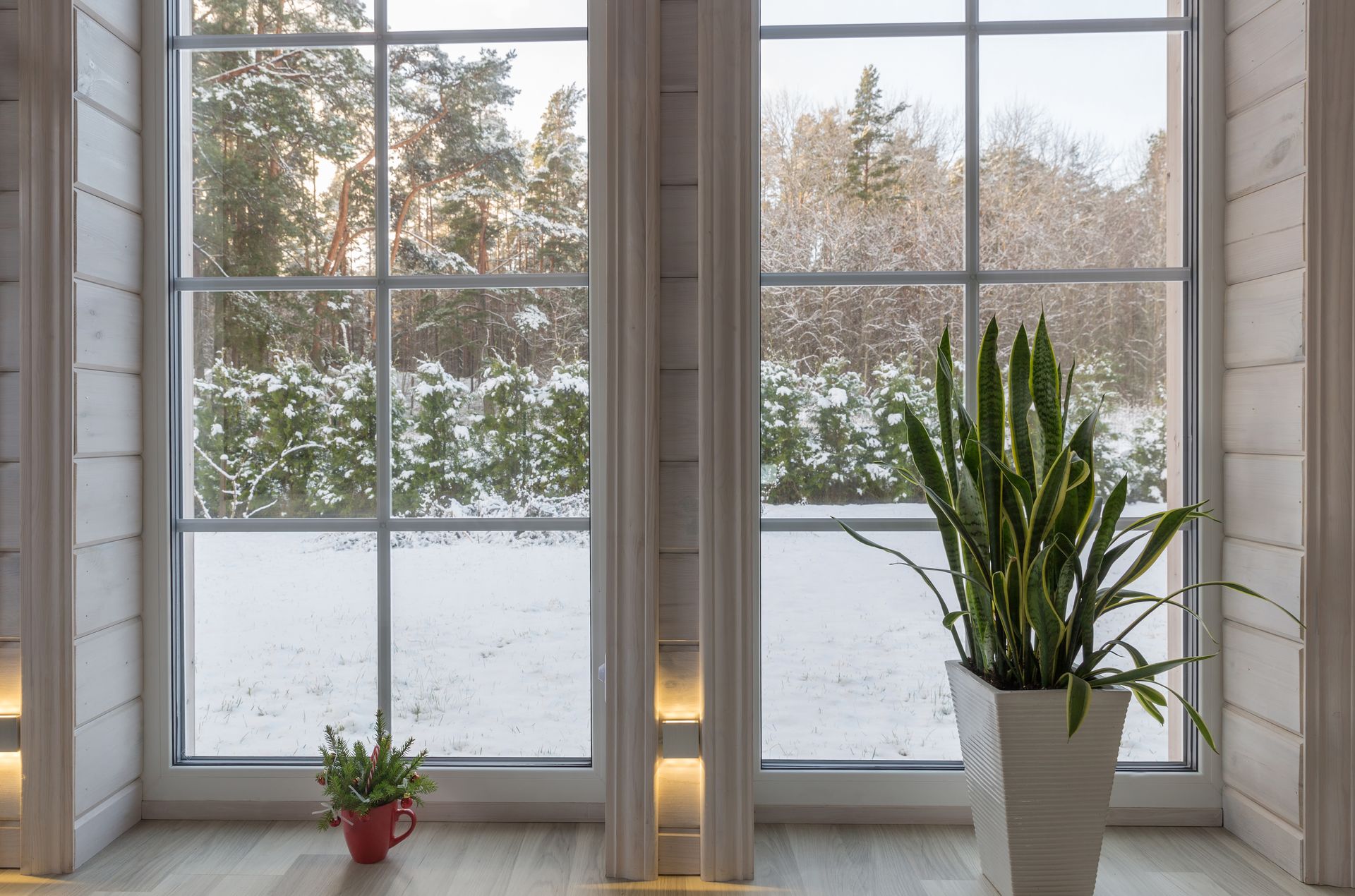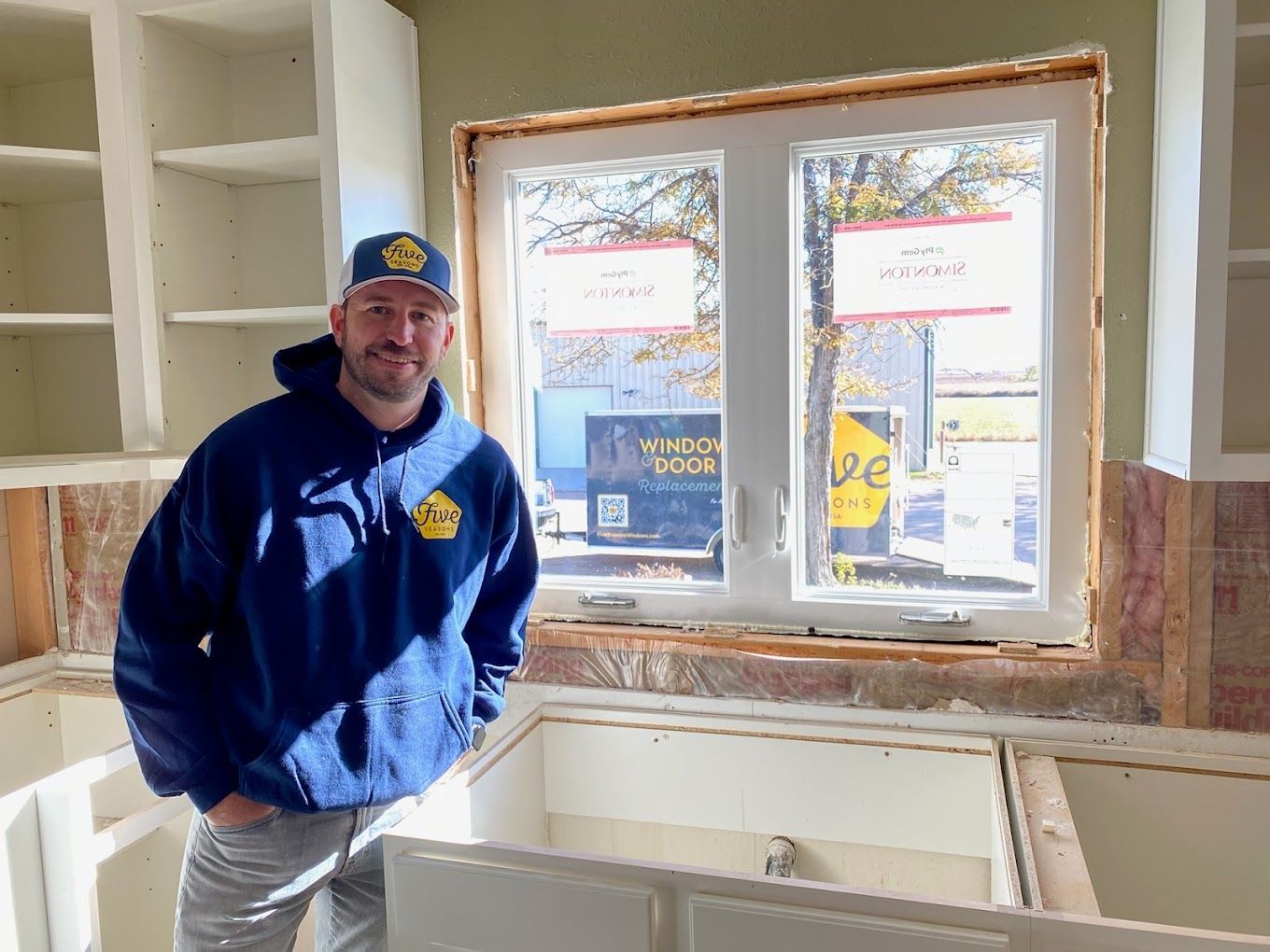Choosing durable replacement windows for cold climates is essential for maintaining warmth, reducing energy bills, and protecting your home from moisture damage and drafts. In freezing conditions, standard windows can warp, leak, or fail to insulate properly—resulting in discomfort and rising heating costs.
According to the U.S. Department of Energy, heat loss through inefficient windows can account for up to 25–30% of residential heating energy use. That’s why durable, energy-efficient windows designed for harsh winters aren’t just a luxury—they’re a necessity. Materials like fiberglass, triple-pane glass, and advanced sealing systems ensure long-term performance, comfort, and savings during the coldest months.
In this guide, we’ll explore why durable windows matter in cold climates, what features to look for, and how smart choices can protect your investment for decades to come.
What Makes a Window “Durable” in Cold Climates?
Durability in a cold climate doesn’t just mean weather resistance—it means structural integrity under thermal stress, minimal air leakage, and consistent insulation despite sub-zero temperatures. A durable window should remain stable as temperatures fluctuate, resisting cracks, frame distortion, and failed seals.
Key features of durable windows include fusion-welded frames, reinforced sashes, insulated glass with low-emissivity (Low-E) coatings, and inert gas fills like argon or krypton between panes. These elements ensure your windows perform year after year—even during freeze-thaw cycles common in northern regions.
In addition, cold climates demand high-quality materials. Vinyl, fiberglass, and composite frames outperform wood and aluminum due to their thermal resistance and resistance to warping. When evaluating windows for durability, always ask about impact ratings, U-factor, and warranties specific to cold weather environments.

The Hidden Cost of Poor-Quality Windows in Freezing Weather
Low-grade or aging windows can cost you far more than you realize during winter. Drafts sneak through worn seals. Condensation leads to mold and water damage. Cold air lowers indoor temperatures, forcing your HVAC system to work overtime and pushing your energy bill up month after month.
Over time, these inefficiencies don’t just affect comfort—they wear down your entire home’s envelope. Moisture buildup inside frames can cause structural rot, and consistent exposure to sub-freezing air can degrade your insulation and wall cavities.
By contrast, durable windows are engineered to resist these cold climate effects. They create a tight thermal seal, prevent condensation buildup, and stabilize indoor temperatures. While the upfront cost of replacement may seem steep, the long-term savings and home protection they provide make them a wise investment.
Best Materials and Glass Options for Cold-Weather Windows
In harsh climates, not all windows are created equal. Material selection plays a huge role in performance. Fiberglass and composite frames are top choices for cold weather—they expand and contract less than vinyl, resist cracking, and have excellent insulating properties.
Triple-pane glass is highly recommended for extreme winter regions. It contains two gas-filled chambers (usually argon or krypton), which dramatically reduce heat transfer. Combined with Low-E coatings, these windows reflect heat back into your home while minimizing solar gain from winter sunlight.
Warm-edge spacers between panes help maintain consistent temperatures and prevent condensation around the edges. Meanwhile, foam-filled frames and heavy-duty weatherstripping act as a final barrier to drafts and moisture.
While dual-pane windows may suffice in moderate climates, triple-pane units are the gold standard for northern homes. Ask your installer about NFRC ratings—especially U-factor and air leakage scores—to compare energy performance across different models.
Long-Term Savings: Lower Bills, Fewer Repairs
Durable replacement windows don’t just improve comfort—they actively reduce your utility costs over time. In cold climates, the return on investment becomes visible quickly: lower heating bills, fewer HVAC repairs, and a reduced need for dehumidifiers or space heaters.
A study by ENERGY STAR found that replacing single-pane windows with certified double- or triple-pane alternatives can save homeowners up to $465 annually in colder U.S. regions. Over 10–20 years, that adds up to thousands in savings—offsetting your initial purchase and installation costs.
Moreover, high-quality windows are less likely to require maintenance or early replacement. Strong frames won’t warp under snow load. Advanced seals prevent foggy panes and interior leaks. Simply put, they’re built to last—and that longevity protects your budget from unexpected repairs.
How Window Installation Affects Performance in Cold Areas
Even the most durable window will underperform if it’s poorly installed. In cold climates, airtight sealing and precision placement are non-negotiable. Improper insulation or gaps around the frame allow cold air infiltration and can defeat even the best-rated window.
Look for installers who specialize in cold-weather regions. They’ll understand the importance of vapor barriers, expansion gaps, and thermal breaks. A professional will also use spray foam insulation and flashing to ensure water and air tightness throughout the installation.
Inspect post-installation performance during the next cold snap. Drafts, condensation, or uneven temperatures near the window are signs something was missed. A high-quality installation includes cleanup, sealing, warranty paperwork, and a final inspection to guarantee everything is up to spec.
Choosing a certified and experienced installer is just as important as choosing a durable window brand.
Signs It’s Time to Upgrade to Cold-Climate-Ready Windows
If you’re not sure whether your windows need replacing, there are several clear red flags to watch for—especially during winter. Cold drafts near closed windows, ice buildup on the glass, and fog between panes are classic indicators of seal failure or inadequate insulation.
Cracked or warped frames, especially wood or aluminum, signal long-term damage that can’t be reversed. Rising heating bills despite a functioning HVAC system often point to window-related heat loss. Water stains or mold near window sills suggest condensation issues that need urgent attention.
Any of these signs mean your current windows aren’t performing as they should in cold conditions. The sooner you act, the more you’ll save in energy and prevent further structural problems.
People Also Ask About Durable Replacement Windows for Cold Climates
What window frame material is best for cold climates?
Fiberglass and composite frames are typically the best materials for cold climates due to their thermal resistance and structural stability. These materials don’t expand and contract as dramatically as vinyl, which helps maintain a strong, consistent seal even in extreme temperatures. In contrast, wood frames, while aesthetically pleasing, are prone to moisture damage and can warp or rot over time without constant maintenance.
Vinyl frames are another common option, often chosen for their affordability. However, in colder environments, vinyl may become brittle and less durable compared to fiberglass. Composite materials, made from a blend of wood and synthetic resins, offer the best of both worlds: excellent insulation, minimal maintenance, and long-term resilience. When investing in windows for a cold climate, it’s worth considering how each material reacts to thermal shifts and moisture exposure.
Are triple-pane windows worth it in cold climates?
Triple-pane windows are often considered the gold standard for homes in cold climates. With two insulating gas layers—typically argon or krypton—triple-pane designs significantly reduce heat transfer, helping to maintain a consistent indoor temperature. This added insulation is particularly valuable in regions that experience extended winters and sub-zero temperatures.
Beyond thermal performance, triple-pane windows also offer improved soundproofing and reduced condensation. They can minimize the formation of frost or ice on the interior glass surface, which is common with less insulated window models. While they carry a higher upfront cost than double-pane windows, the energy savings and comfort they provide over time can easily justify the investment for many homeowners.
Can replacement windows really lower my heating bill?
Yes, replacing old or inefficient windows with high-performance models can have a noticeable impact on your heating bills. Modern windows with insulated glass, Low-E coatings, and properly sealed frames reduce heat loss and air infiltration. This keeps your home warmer in winter without putting excess strain on your heating system.
In fact, ENERGY STAR estimates that in colder regions, homeowners can save up to 24% annually on heating costs after upgrading to certified energy-efficient windows. These savings accumulate over the years and also reduce your carbon footprint. Properly installed replacement windows create a more stable indoor environment, meaning your furnace doesn’t have to work as hard or as often.
How do I know if my windows are leaking cold air?
There are several ways to determine if your windows are leaking cold air. One of the simplest is to perform a draft test—stand near the window on a cold day and see if you feel air movement or a chill, especially around the edges or sill. You can also use a lit candle or incense stick and slowly move it around the window frame; if the flame flickers or the smoke wavers, air is leaking through gaps.
Other signs include condensation or frost buildup between panes (indicating a broken seal), rattling window components, or visible gaps between the frame and wall. High heating bills despite an energy-efficient HVAC system can also point to significant heat loss through your windows. These are all signals that it’s time to inspect your windows for performance issues.
What window ratings should I look for in a cold climate?
When shopping for cold-climate windows, pay close attention to the National Fenestration Rating Council (NFRC) labels. The most important rating is the U-factor, which measures the window’s rate of heat loss—a lower number indicates better insulation. For cold climates, look for a U-factor of 0.30 or less. Triple-pane windows typically perform best in this category.
Another key rating is the Solar Heat Gain Coefficient (SHGC), which measures how well the window blocks heat from sunlight. In cold climates, a higher SHGC can help capture passive solar heat during the day, reducing heating demand. Air leakage (AL) rating is also critical, as it tells you how much air will enter the home through the window frame. ENERGY STAR certification is a reliable shortcut for identifying windows that meet all these performance benchmarks for your region.

Our Take
For homeowners living in colder regions, durable replacement windows are more than just a seasonal luxury—they’re an essential upgrade. At Market Turning Points, we’ve observed how smart structural investments often align with the broader cycles of market and energy shifts. Durable windows are one of those quiet, practical choices that pay off in both comfort and capital.
Much like understanding price structure before reacting to headlines, homeowners who prioritize durability and performance over aesthetics or cost alone are rarely disappointed. Winter won’t wait, and neither should your decision to seal in savings and shield against the cold.
For more insights, check out our post on the Replacement Doors Guide for additional home upgrade strategies.
Final Takeaway
When it comes to cold climates, not all windows are built to last—or to perform. Choosing durable replacement windows isn’t just a home improvement project. It’s a strategy to insulate your home, protect your family, and reduce your long-term energy costs.
Look for high-performance frames like fiberglass, triple-pane glass, and professional installation to get the most from your investment. Watch for signs of aging windows and act before winter makes problems worse.
Smart homeowners know that the right time to prepare is before the storm. And with durable replacement windows, you’ll feel the difference every time the temperature drops.
Get Started Today
Five Seasons Windows & Doors is Colorado’s top-rated local window company with 230+ 5-star reviews. We offer expert advice, no-pressure quotes, and flexible project options — including phased installs. Schedule your consult today.



